The playful, vibrant world of 1990s animation continues to leave an indelible mark on contemporary digital culture. As social media platforms evolve and transform the way we communicate, the echoes of beloved cartoon characters from decades past remain surprisingly potent. From memes to fashion collaborations, these nostalgic icons have transcended their original medium to become powerful symbols in the visual language of today's online communities. Understanding this phenomenon requires a closer look at how these animated figures have adapted to the rhythms and aesthetics of modern social media trends.
Nostalgic icons: how 90s cartoon characters shaped modern digital culture
The resurgence of classic animation in digital spaces is far from accidental. Cartoon characters that once graced Saturday morning television screens have found new life as central figures in viral content and meme culture. The distinct visual style of 1990s animation, characterised by bold colours, exaggerated expressions, and a certain irreverence, translates remarkably well to the fast-paced, visually driven nature of platforms like Instagram, TikTok, and Twitter. These characters serve as a shared cultural reference point, bridging generational divides and offering a sense of comfort and familiarity in an ever-changing digital landscape.
The Resurgence of Classic Animation in Memes and Viral Content
Memes have become the lingua franca of the internet, and 1990s cartoon characters are among their most enduring subjects. Whether it's a still from The Simpsons capturing a relatable moment or a reaction GIF featuring characters from other iconic series, these animations provide a rich repository of expressions and scenarios that resonate with users. The simplicity and clarity of cartoon imagery make it ideal for quick consumption and rapid sharing, two pillars of social media success. Moreover, the emotional range conveyed by these characters allows them to articulate complex feelings in a way that words alone often cannot. This versatility has ensured their continued relevance in meme culture, where humour and relatability reign supreme.
From saturday morning telly to instagram reels: character evolution
The journey of 1990s cartoon characters from traditional broadcasting to Instagram Reels and TikTok videos illustrates a broader shift in media consumption. Once confined to specific time slots and channels, these characters now exist in an on-demand, user-generated ecosystem. Creators remix and reimagine scenes, adding modern soundtracks, captions, and commentary that reflect current events and sentiments. This evolution has not only preserved the legacy of these characters but has also introduced them to audiences who may never have watched the original programmes. In doing so, the characters have been recontextualised, becoming flexible symbols that adapt to the themes and aesthetics of contemporary social media trends.
The direct link between 90s animation and contemporary social media phenomena

Beyond memes and viral videos, the influence of 1990s cartoons extends into the very fabric of visual culture on social media. The distinctive aesthetics of that era have inspired everything from digital filters to fashion illustration, demonstrating a direct lineage between past and present. Designers and brands have recognised the potent appeal of cartoon imagery, leveraging it to create visually striking content that captures attention and drives engagement. This cross-pollination between animation and fashion, in particular, has resulted in collaborations and collections that celebrate the playful spirit of 90s cartoons while pushing the boundaries of modern design.
Character aesthetics driving today's visual trends and filters
The bold lines, saturated hues, and exaggerated proportions that defined 1990s animation have become a blueprint for many of today's digital aesthetics. Social media filters that transform users into cartoon versions of themselves draw heavily on this visual language, offering a playful escape from reality. Fashion brands such as Balenciaga, Gucci, and Moschino have embraced cartoon aesthetics, incorporating digital rendering and illustration into their campaigns and runway presentations. This trend is not limited to high fashion; collaborations between streetwear labels and classic cartoon franchises have become increasingly common. For instance, BAPE, Converse, and LGN Louis Gabriel Nouchi have all released collections that pay homage to the animation styles of the 90s. Even Bratz dolls, themselves a product of late 90s pop culture, have partnered with Dr. Martens to create footwear that blends nostalgia with contemporary edge. Such collaborations underscore the enduring appeal of cartoon imagery as a tool for self-expression and visual identity.
Gen Z's Embrace of Retro Cartoon Culture Through TikTok and Twitter
Generation Z, despite being born after the heyday of 90s animation, has enthusiastically embraced retro cartoon culture. Platforms like TikTok and Twitter serve as stages for this revival, where users create content that both celebrates and critiques the cartoons of the past. This generation's engagement with 1990s nostalgia is multifaceted, blending genuine affection with a knowing irony that characterises much of online humour. The accessibility of archival content through streaming services has made it easier than ever for younger audiences to discover and engage with these characters, fuelling a cycle of rediscovery and reinterpretation. This intergenerational dialogue has enriched the cultural significance of 90s cartoons, ensuring their place in the ever-evolving tapestry of social media trends. The influence is also evident in fashion shows and collaborations, such as the SS26 collection from SAGABOI and presentations at 080 Barcelona Fashion, where designers like Carlota Barrera and Outsiders Division draw on nostalgic aesthetics to create forward-looking styles. Similarly, the resurgence of trainers inspired by football culture, such as those from Stone Island and New Balance, often echo the bold, sporty designs popularised in 90s animation. The phenomenon extends to music and celebrity culture as well, with artists like Rina Sawayama and Central Cee featuring in holiday collections from UGG, blending nostalgia with contemporary cool. Even high-profile figures like Rosalía and A$AP Rocky, who was named the CFDA's Fashion Icon for 2025, incorporate elements of cartoon aesthetics into their personal style and public appearances. The influence of 1990s cartoons on today's social media trends is a testament to the power of visual storytelling and shared cultural memory. As these characters continue to inspire new forms of digital expression, they remind us that the past is never truly past but rather a living, breathing part of our present.


